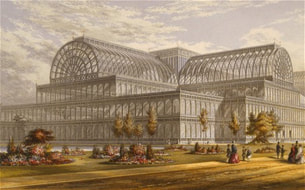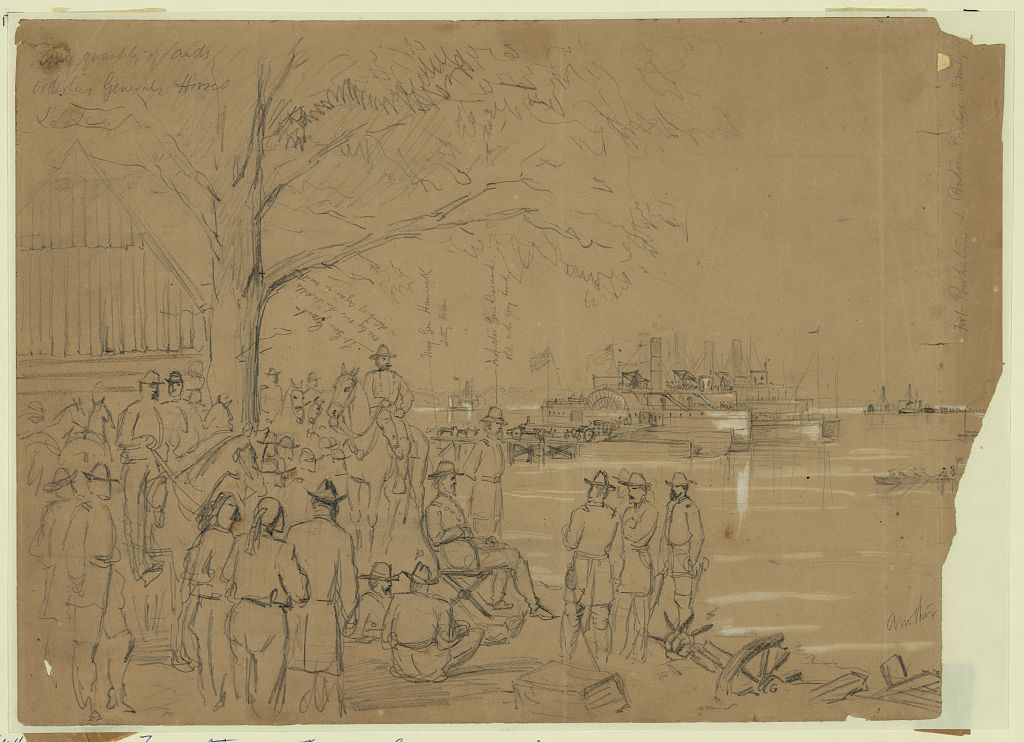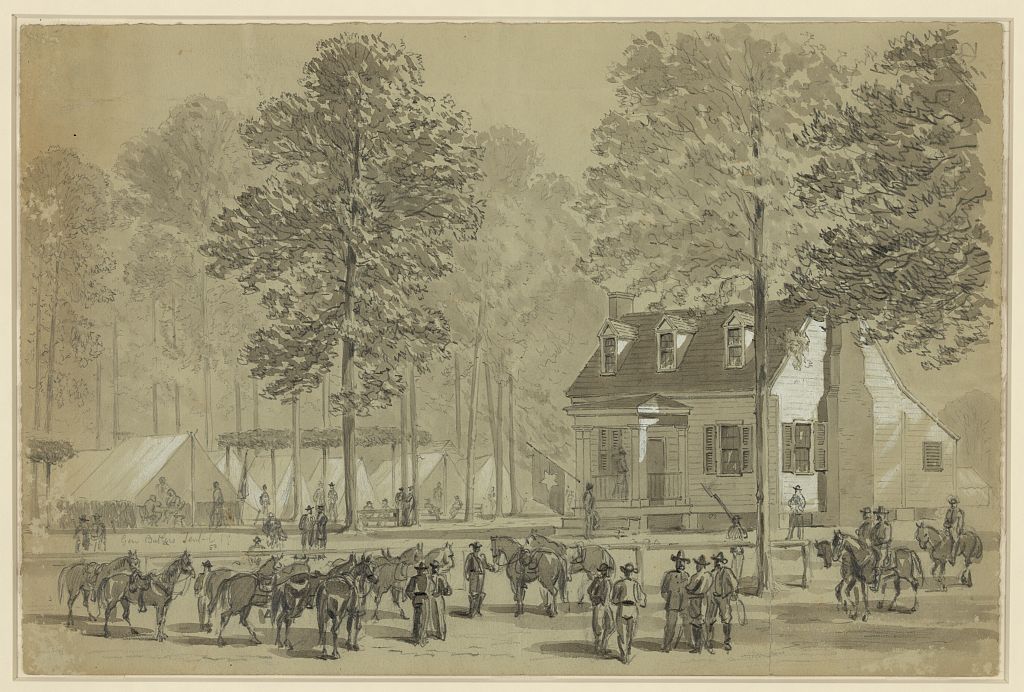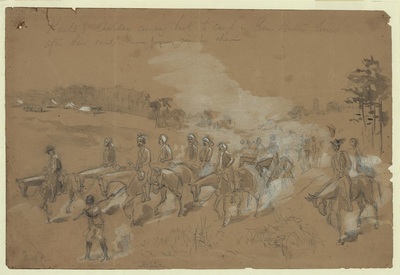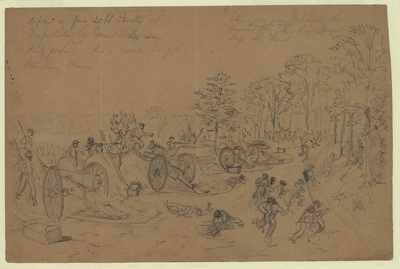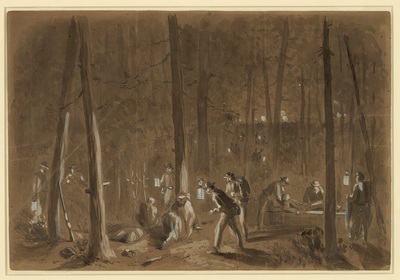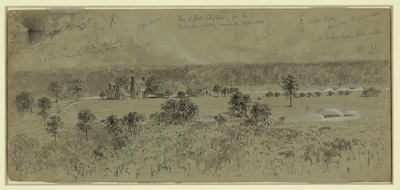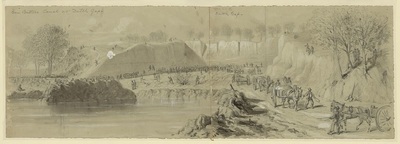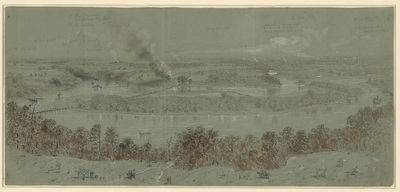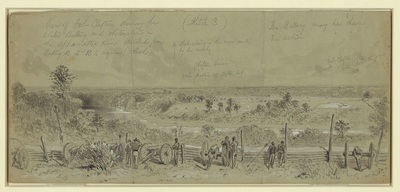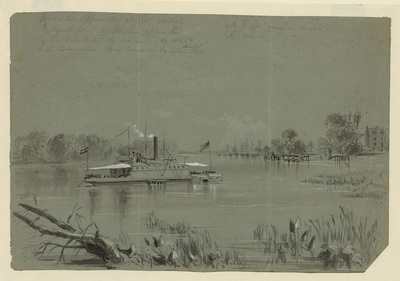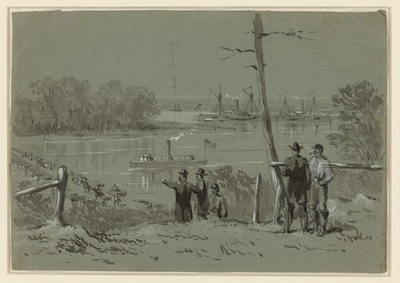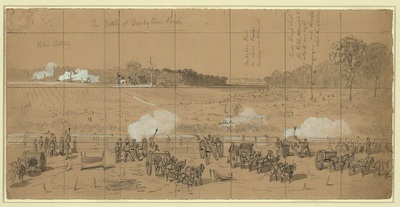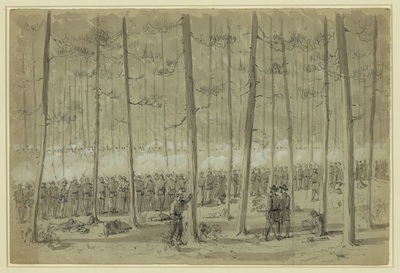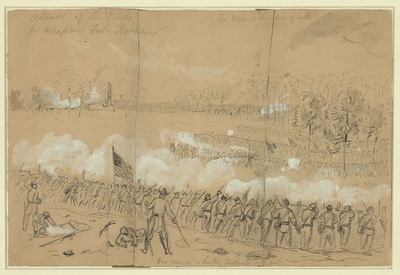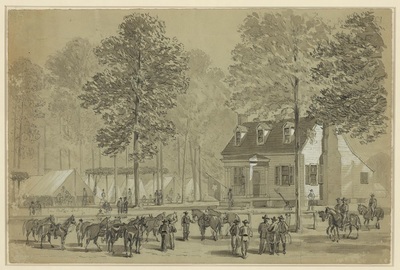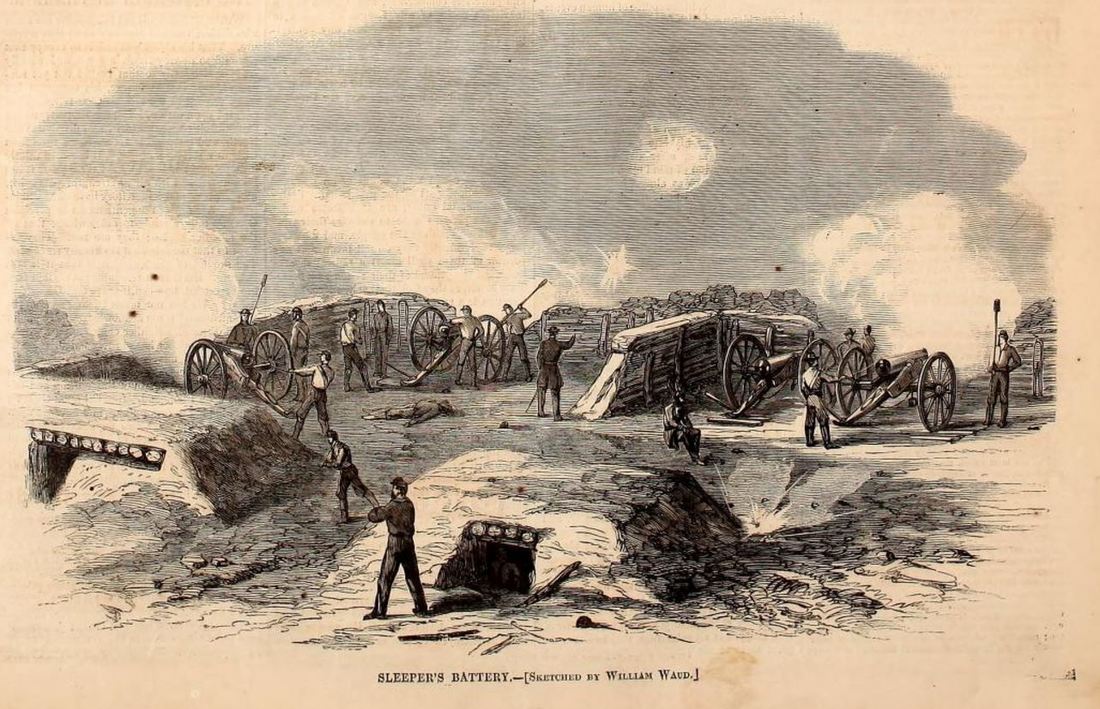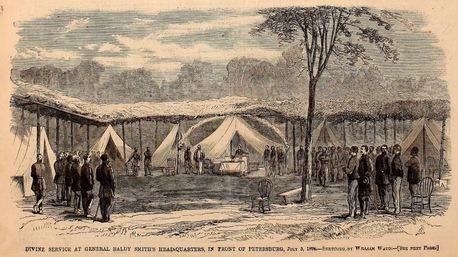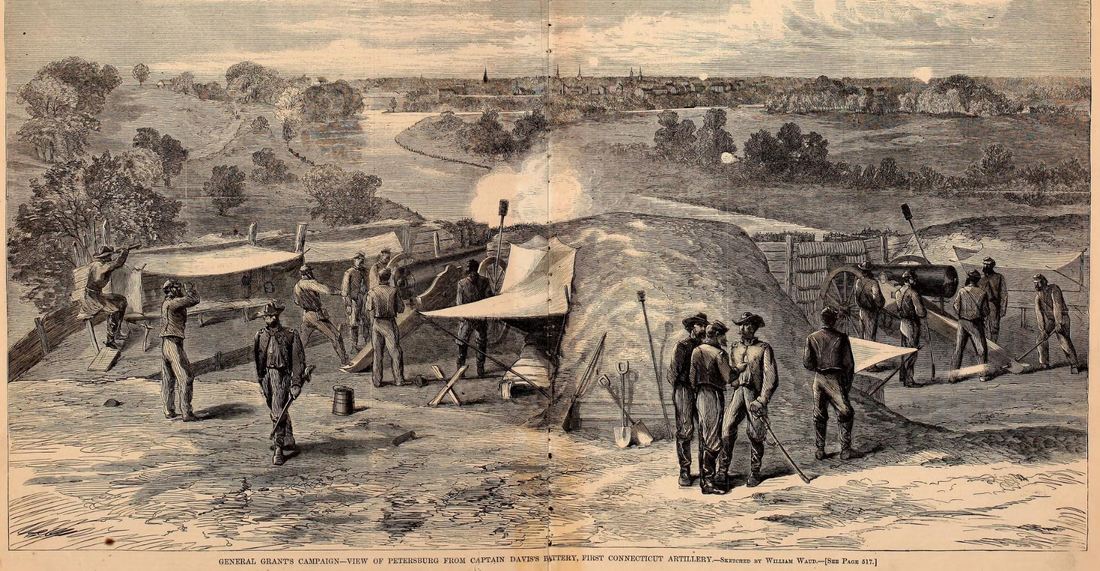William Waud, Special Artist for Harper's Weekly at Petersburg
|
William Waud (wōd), brother of artist Alfred Rudolph Waud was born in 1832 in England. He was trained as an architect and worked as an assistant on the famed Crystal Palace for the Great Exhibition in Hyde Park London in 1851. William joined his brother Alfred in the United States at first working as a special artist for Frank Leslie's Illustrated Newspaper. When war seemed imminent, Leslie sent William south to sketch the inauguration of Confederate President Jefferson Davis. William continued to Charleston where with his brother he observed preparations for the bombardment of Fort Sumter in April 1861. William Waud accompanied Admiral Farragut along the Gulf coast and on the campaign to capture New Orleans. He joined the Army of the Potomac for the Peninsula Campaign in summer 1862, making numerous sketches for Leslie's. For the 1864 campaigns, he moved over to Harper's Weekly and embedded himself with the Army of the James where he documented siege events on the Bermuda Hundred Front, Deep Bottom, and Petersburg. In Spring 1865, William Waud accompanied Sherman's Army as it marched north through the Carolinas.
|

